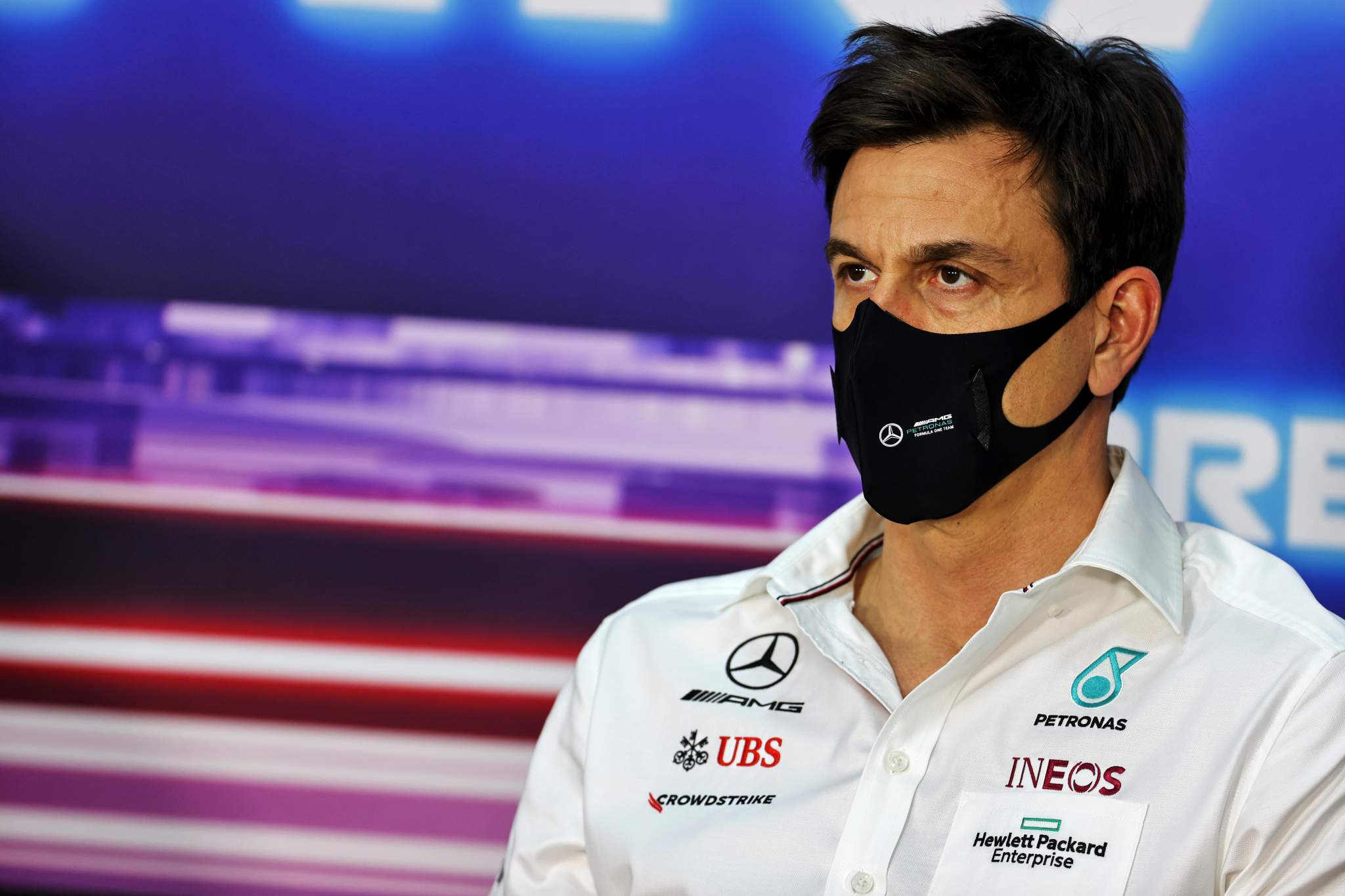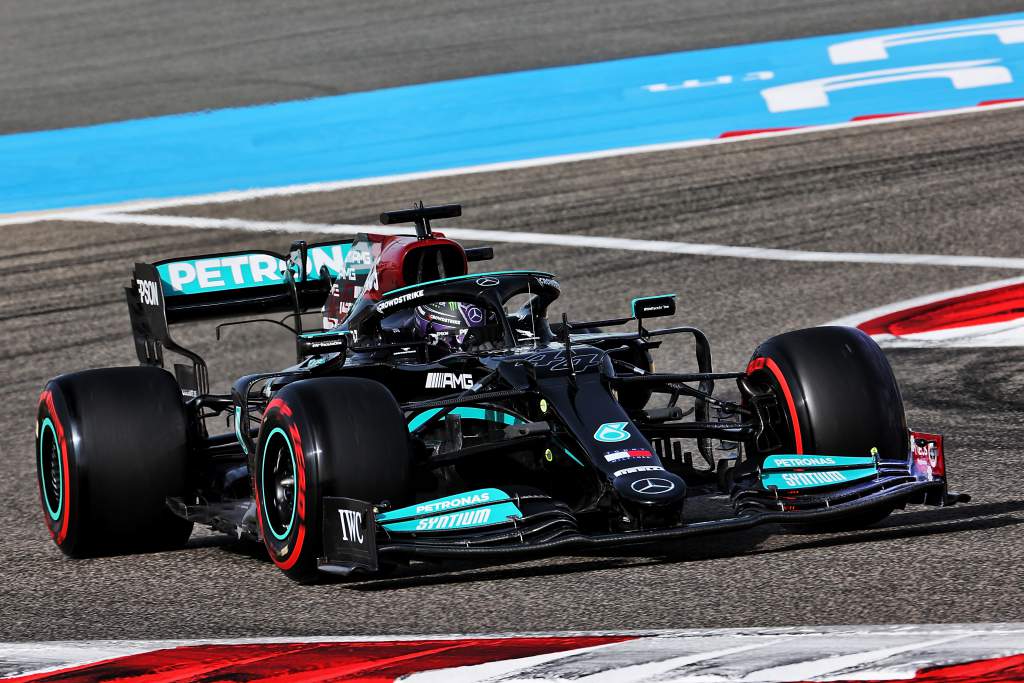Up Next

Mercedes’ analysis has shown that its lower-rake concept has been hit harder by Formula 1’s aerodynamic changes and it’s “physically not possible” to make the W12 a high-rake car.
The world champion team has declared Red Bull the favourite for the season opener in Bahrain this weekend, after the Mercedes W12 suffered a rear instability issue in testing two weeks ago.
Mercedes felt it would be able to make progress in between testing and the first race but did not expect to overcome its perceived deficit to Red Bull and claimed it was not sure it could even bring itself level.
Team boss Toto Wolff says the team believes it has been harder for Mercedes to recover downforce lost because of the rule changes for 2021, which reduced performance from the rear of the car chiefly by cutting away a section of the floor, among other minor changes.
“We’ve probably suffered more with the change of regulations than the cars with the higher rake and the Red Bull has followed that concept since many years,” said Wolff on Friday in Bahrain.
“It’s maybe more difficult for us to recover some of the lost downforce but so far what I’ve seen and what I hope is that we can really have a really tough fight.
“It’s what the fans want to see and what we would like to have.”
In simple terms, Mercedes’ lower-rake concept means the rear of its car runs lower to the ground.
But if there is a greater benefit with the 2021 floor rules to run higher-rake, simple raising the rear ride height is not a solution.
A car’s entire aero concept is derived from the rake. Adjusting the ride height changes the angle of attack of all the aero surfaces – from the front wing to the bargeboards to the rear end.
On the W12, a continuation of Mercedes’ long-established concept, the aero surfaces have been developed around a long, flatter floor.
Wolff said that other factors, especially the altered Pirelli tyres for 2021, meant that the difference in rake is not the only thing that Mercedes may be suffering from.
But when asked by The Race about the difficulties of extreme rake changes and what that meant Mercedes could do to improve its car’s handling, Wolff said: “In the last year of these regulations we wouldn’t be able to replicate the concept that Red Bull and some of the other teams have been racing.

“It’s physically not possible, we couldn’t run our suspensions and settings in the way that Red Bull does.
“So, we need to do the best out of it and tune the car with what we have available.”
A rear end stability problem will be particularly costly at Bahrain, which is an extremely rear-limited circuit with an emphasis on traction. It is also prone to windier conditions and changes in wind direction.
That means Mercedes is likely to face fewer rear stability problems elsewhere, but has still had to find a solution for the season opener.
First impressions from Friday practice were that Mercedes has been able to stabilise its car, though the understeer that Lewis Hamilton and Valtteri Bottas had in FP1 would suggest that Mercedes’ temporary solution for this track has been to reduce the loading on the front end to achieve a better balance.
Mercedes’ task in the more representative second practice session will be to fine-tune that balance while ensuring it is still more stable than in testing.
Wolff believes that matching Red Bull’s pace in Bahrain is the best possible outcome for Mercedes.
“In Formula 1 it’s like many other sports, we are oscillating between depression and exuberance,” he said.
“When everything is perfect you think ‘here we go, this is ours’ and then when you have a few days that are not very good you look at the data and say ‘well, how should we ever catch that up?’.
“If we are behind then we just need to catch up and do a good job.
“If we are just about at the same pace, which I would consider today maybe the best possible scenario for us, then we up for the fight.”





